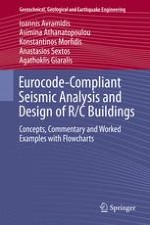This book aims to serve as an essential reference to facilitate civil engineers involved in the design of new conventional (ordinary) reinforced concrete (R/C) buildings regulatedby the current European EC8 (EN 1998-1:2004) and EC2 (EN 1992-1-1:2004) codesof practice. The book provides unique step-by-step flowcharts which take the readerthrough all the required operations, calculations, and verification checks prescribed bythe EC8 provisions. These flowcharts are complemented by comprehensive discussionsand practical explanatory comments on critical aspects of the EC8 code-regulatedprocedure for the earthquake resistant design of R/C buildings. Further, detailedanalysis and design examples of typical multi-storey three-dimensional R/C buildingsare included to illustrate the required steps for achieving designs of real-life structures which comply with the current EC8 provisions. These examples can be readily used as verification tutorials to check the reliability of custom-made computer programs and of commercial Finite Element software developed/used for the design of earthquakeresistant R/C buildings complying with the EC8 (EN 1998-1:2004) code.This book will be of interest to practitioners working in consulting and designingengineering companies and to advanced undergraduate and postgraduate level civilengineering students attending courses and curricula in the earthquake resistant designof structures and/or undertaking pertinent design projects.
